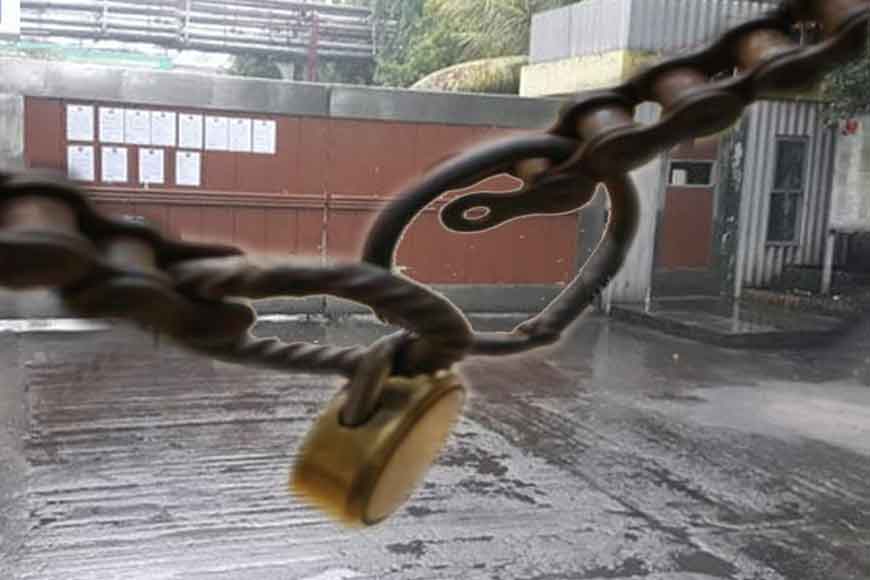Did ‘communist’ Bengal ever understand the relevance of May Day?

I have always loved the colour red, for it has signified the hue of blood or a dying sun in the horizon. But whenever I saw a red flag fluttering on any factory top, I feared and dreaded, may be another industry is on its way out from West Bengal. Well, I am talking about the ’80s and early ’90s when we were in school and were witness to innumerable labour movements in Bengal, that had a high creative quotient with poetry and literature and movies epitomizing the class struggle, but had a devastating impact on the economy and image of the state.
But were they the true labour struggles that May Day signified? Or mindless agitations that took a state a century back? Today, is International Labour Day, a day that honours labourers and the working class across the world. Matching with the Celtic Spring Festival, this day is commonly known around the globe as May Day and is an official public holiday for erstwhile communist countries like People’s Republic of China, North Korea, Cuba, and Russia. May Day was a call against the exploitation of the Labour Class by industrialists and for reducing work hours from 15 to 8 hours a day, demanding for paid leaves, proper wages etc.
But did Bengal’s labour movements have an iota of what May Day stands for? Probably film-maker Satyajit Ray realized the impact of communism on industries of Bengal and through subtle and satire movies he could bring out the dichotomy. Take for example his movie Pratidwandi, the story of an educated middle-class youth caught in the political whirlwind.In his interview, he comes across as a potential ‘Communist’ and is rejected. He does not get the job!
Such was the fear among industrialists in the ’60s and ’70s against the unions,that they preferred either to leave the state with their investments or just not come to the state at all. Since I stay close to Taratala, once known as the industrial hub of Kolkata, I used to see several factories one after the other on a ‘lock-out’ mode with red flags fluttering on them, and a handful of union members sitting infront of the gates month after month raising a slogan now and again. Labour disputes and lock-outs had become the order of the day and union leaders like Kali Banerjee was known as ‘Tala Banerjee’ as he took all his effort to shut down factories by putting locks on thegates! Well, though such stories came as a comic relief and we often laughed as kids, it came as a sign of distress later, when our generation after college in the late ’90s could hardly find any job as most industries had left West Bengal for greener pastures and vowed never to return again.
A long list of companies, from tea major Brooke Bond India to ICI India, Shaw Wallace, BATA and electronics giant Philips India, which incidentally was born in Kolkata, had left for greener pastures. According to data, if there were 179 strikes and 49 incidents of lockout in factories in 1965, in 1970, the comparative figures were 678 and 128. The story of how Philips left the land where it was born is interesting. Their world wide head had come on a visit to the Beliaghata factory and was not allowed to enter the factory by the Left union. He waited for more than an hour, asked help from the state administration, who as usual did not come to his aid. Within one night the Philips board decided to shift all their investments to other states from Kolkata.
At times the labour unrest turned violent, injuring the owners and management staff. On January 12, 1968, the executive vice-chairman of a Kolkata-based engineering company was trying to bring about some discipline in the factory to save it from liquidation. While he was returning home from the factory, his car was bombed and his driver seriously injured. And so was he. The factory was closed for the next several months.
Neelkanth Ratnakar Dongre, a young and upcoming executive of Jay Engineering Works, was surrounded in the factory by workers who were out to cause mayhem.He loaded all important company papers in a truck, smashed the vehicle through a wall and drove it non-stop till he reached Delhi where owner, Lala Charat Ram lived.Impressed by his loyalty, Charat Ram made Dongre his partner in business! But for Bengal another industry left!
As the attacks intensified, even industrialists like S K Birla, who was committed to working in Bengal had to often transfer his papers, money and jewellery out of the state, fearing he and his family might have to leave anytime. Labour strikes became as much a symbol of West Bengal as its iconic trams. Jessop Company, Braithwaite, Burn & Company, Indian Standard Wagon, GKW and Metal Box were all affected. Thus,Bengal’s engineering industry, which was heavily dependent on the Railways, was badly hit as orders were cut down because of labour disputes and lock-outs.In many companies they lasted more than a year.
Eventually, companies such as Jessop, Braithwaite, Burn & Company, Indian Standard Wagon were nationalised. Another industrialist Lakshmipat Singhania, who set up Aluminium Corporation of India near Asansol, had moved from Kanpur to Kolkata in 1942. One day, the works manager of his company was thrashed by the workers for more than two hours.The Singhanias met chief minister Ajoy Mukherjee and deputy chief minister Jyoti Basu, who were aware of the entire episode, but pinned the blame on the works manager. The workers switched off the power supply to the aluminium smelters and the plant was closed for months.
In 1970s the Singhanias moved out and relocated to Delhi. They were not the only ones to move out. In 1978, Basant Kumar Birla’s son, Aditya Vikram, relocated to Mumbai from Kolkata to grow his empire there.In 1980, S K Birla’s son, Sidharth, shifted for Delhi. In 1970, Birla Building on R N Mukherjee Road, where most Birla companies were to be headquartered, had just been built. Till then, these companies used to operate out of India Exchange Place.Though the building was ready, they could not move in as the CPI-M wanted one umbrella union for all Birla companies. But different companies had different set of shareholders and board of directors. Yet, they did not agree. So, the Birlas decided to close down the offices and their management staff started operating out of home for two years.The metal signage at Birla Building that reads ‘Occupied since 1972’ bears testimony to it.In 1994-1995, Ispat, now merged with JSW Steel moved headquarters from Kolkata to Mumbai.
Next followed Stone India, India Foils, Avery and the list was endless.So this May Day, I wonder if the communist unions of West Bengal had an iota of understanding about what May Day is all about. Or was it that they related it to just red flags and Laal Salaam!









